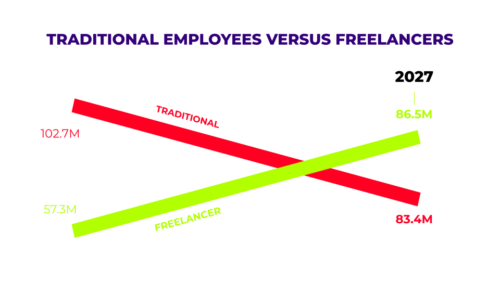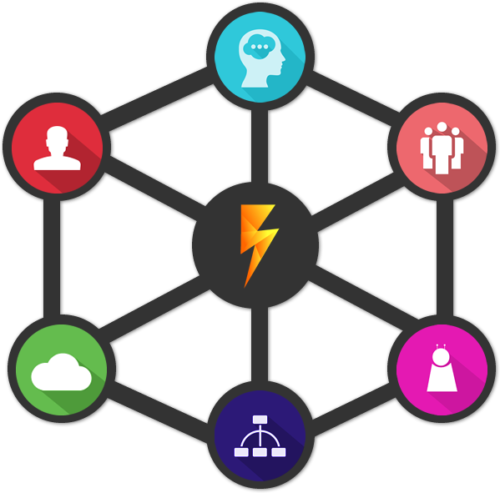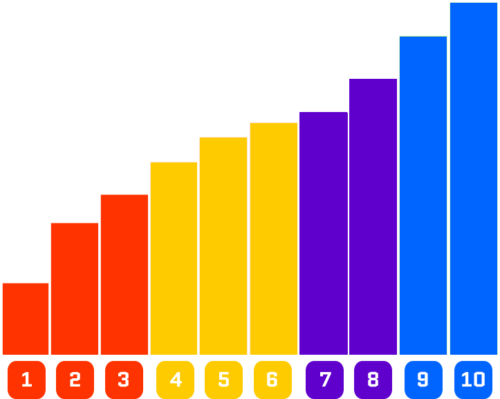
28 neighbourhoods in Dubai have been renamed
January 18, 2024
BRICS Hub
January 27, 2024by Regy Andrade
Everyone aspires to create an abundant lifestyle, yet abundance differs from merely possessing money. Time is our most precious asset and is one of the 8 Types of Freedom. As individuals, we constantly strive to be more productive and gain more “free” time by organizing our schedules and such. However, as entrepreneurs, we must ascend to a higher level to enhance the efficiency and outcomes of our business – and to do so in a way that positively impacts our personal time is no simple feat.
Based on this, a few years ago I started studying and working (performing experiments and creating related products) on how we could do this in a way that was agnostic, simple and practical. In this text I will share some information gathered and a method on how you can apply this to your business.
“A man is rich in proportion to the number of things he can afford to let alone.”
— Henry David Thoreau
An Age of Disruption
Technology has been growing exponentially in recent decades, and the offering of technology-based solutions and services has nearly kept pace with this growth. The growth has been so significant that many things are being underutilized or even have unimaginable potential for future use, like Blockchain and Artificial Intelligence.
On the other hand, human behavior has been a constant and hasn’t kept up with this exponential growth in technology. I believe we are now at the moment of witnessing the intersection of these two tides, the exponential versus the linear. The result will be a breaking point: technology is so pervasive that it has become practically invisible in everyday life, and this is leading us to a moment that will allow a new leap for the human race.
Thousands of years ago, agriculture revolutionized by automating food production and consequently our way of living. Not having to spend the entire day hunting and gathering food allowed us to spend that same time learning and developing new things, becoming doctors, engineers, programmers, and even astronauts… This breaking point will allow us to increasingly explore the best that life has to offer, and this will consequently take us to a new level, in all senses.
“The future has already arrived, but not for everyone at the same time”
Just to illustrate all this, in 2015 Adidas announced that it is building a smart factory in Germany, which will be 100% automated, using robots and 3D printers. The operation began in mid-2017 and the expectation was to produce 500,000 pairs of sneakers per year. On the contrary, other examples include Automattic (creator of WordPress) which has 100% of its employees working remotely spread across 50 countries, and even traditional Whirpool (owner of the brands Brastemp, Consul, and KitchenAid) adopted the practice of Home Office in Latin America. More and more technology will enable more complex tasks to be performed by robots (physical and digital) and professionals on demand.
We will increasingly stop living the life of companies, commercial hours, and unnecessary tasks. This new level will turn any company into a technology company, allowing an ever larger part of people to have the freedom to work anywhere, maintaining human relationships while work becomes the lifestyle itself – automation will be the new agriculture!
How We Work is Changing
In addition to the fact of technological advancement, one of the other issues faced by companies today is the global labor shortage crisis, which despite not being very clear on managers’ radar. This crisis has already started and to give you an idea, in Brazil for example, in the coming years it will be the country most affected by it in the world, with a negative figure of -33% according to Rainer Strack from the Boston Consulting Group.
By 2025, Brazil could face an annual deficit of 159K software developers and IT professionals. Labor supply does not keep up with demand. Today, 30% of all traffic from RemoteOk workers (#1 remote work platform) is from Brazil.

Some Recent Data:
- It’s being 3X harder to hire, according to contractors.
- 84% of companies, if they could not hire freelancers, would have to delay or cancel projects.
- 63% of teams have someone who works a significant portion of their time remotely.
- 9 out of 10 contractors are more satisfied with the skills of freelancers than full-time.
- Location doesn’t matter: Only 9% think they need to be in the same office.
- Freelancers will account for as much as 80% of the entire Workforce Worldwide by 2030.
- The freelance workforce generated more than $1 trillion for year, constituting a significant portion of the US economy.
- 63% of global CEOs are concerned about availability and corporate demand for freelance workers is increasing according to PwC.
- Freelancing is one of the fastest growing markets in the world.
- One hundred (100) Fortune 500 companies use freelancer platforms.
- 36% of workers reported that they freelanced even in the pandemic – up 8% from 2019.
- 58% of non-freelancers are now considering freelancing in the future.
Sources: Hamann, T.K., Guldenberg, S., 2021), UpWork – Future Workforce Report 2017), Accenture Report /Yili Hong, PauI A. Pavlou, 2013).
A Methodology of Freedom and Efficiency
I have been conducting a study on the future of work, not with a futuristic vision, but focusing on the dynamics that involve technology, people, and the market, and what impact this has on execution, productivity, and collaboration in general.
I set it as a mission to bring all this in a practical and applicable way, so based on this study, I developed a Business Automation methodology that I call “Distributed Execution”. The Distributed Execution methodology is more than just a set of practices; it’s a mindset shift. It is about viewing cost reduction and efficiency not as goals but as byproducts of a more profound operational evolution. It advocates for operational independence, scalability, and a laser focus on core business values. It is the pathway to turning your business into a self-sustaining ecosystem where human errors are minimized, and potential is maximized.
The Payoffs of Pioneering with Distributed Execution
- Cost Efficiency and Agility: Streamline operations and reduce overheads, achieving more with less.
- Operational Independence: Minimize the “Me” factor, fostering a business that thrives on its processes, not just its people.
- Market Value Amplification: Enhance your company’s worth by embracing forward-thinking operational models.
- Scalable Workforce Solutions: Build a flexible, robust workforce ready to meet the challenges of a dynamic market.
- Core Business Focus: Free up vital resources to concentrate on innovation and core competencies.
- Error Reduction: Minimize human error with sophisticated automation.
A New Cycle for a New Age
The execution cycle of Distributed Execution is a trinity of planning, executing, and improving. It begins with a comprehensive audit of the current state, setting the stage for a symphony of automated processes and tasks. The execution is a dance of the best players – be they human or robotic – each bringing their unique skills to the table. And improvement is the continuous refinement, the relentless pursuit of excellence through data, analysis, and innovation.
Planning
In this stage, the current context of the company, its goals and objectives, and the definition of its Organizational Purpose are surveyed.
After this initial survey, the channels/departments*, and their related processes and tasks are also created.
[*] The name channel is used in this case because the flow of communication of tasks and processes is related to the department.
Execute
In execution, the processes are divided into tasks and these tasks are performed by the best player available at that moment. This is done using as a basis the Functional Curriculum of each player (nothing more than an actionable summary with the skills of each one), this collaborator can be an internal employee, an on-demand worker, or even bots (which performs specific tasks).
Improve
In this stage, the objectives and goals are confronted with the current numbers through reports and a Dashboard (various online applications can do this job). According to
each business model, deadlines are created for performing this task, and also other things like bottlenecks in processes and other types of inefficiencies. With this done, it goes back to the initial Planning stage and the improvements are continuously incremented.
The 5 Pillars of Distributed Execution
The methodology introduces an ecosystem built on five pillars, each a cornerstone in building a resilient, agile business ready for the future, and increasing operational independence and better execution.
- Information: Documents, databases, forms and intelligent data (Big Data, for example).
- Communication: The veins and arteries of the organization, pulsating with direct and departmental messages, and centralized workflow notifications.
- Processes: Standardization, improvement and continuous automation and fragmentation of tasks for the best players (Core team, freelancers, and Bots).
- Players: Unite the strengths of in-house teams and on-demand talent like freelancers, alongside Bots and AI.
- Connections: Interlink business partnerships and technology, optimizing input and output channels.
The Automate Score
The Automate Score, a unique metric within the methodology, gauges your business’s automation level and operational independence. This pivotal score ranges from 1 to 10, reflecting how well your company adapts to the modern tapestry of work.
Operational independence plays a crucial role, indeed, it directly impacts the valuation of your business (for those thinking of selling their business, it is very interesting to work on this point). Besides, it indirectly brings cost reduction and productivity gain.
Some Questions to Think About and Improve Your Automate Score:
- How much of your business depends on physical presence?
- What is the degree of independence of your processes?
- Which processes can be automated?
- Which processes or tasks can be excluded?
- What tasks can be fragmented and distributed?
- What tasks can be done by robots?
Note: the methodology began to be developed in 2015. It’s amazing to see the changes that have happened since then; how much has changed, even more so accelerated by the context of the pandemic in 2020, and at the same time, some things not so much. What became clear to me is that all this is a process, and each thing matures in its own time, but the transformation and impact on the ways of working will be inevitable – many have already been able to feel this in their daily lives using ChatGPT and other AI and automation tools like Zapier, for example.







